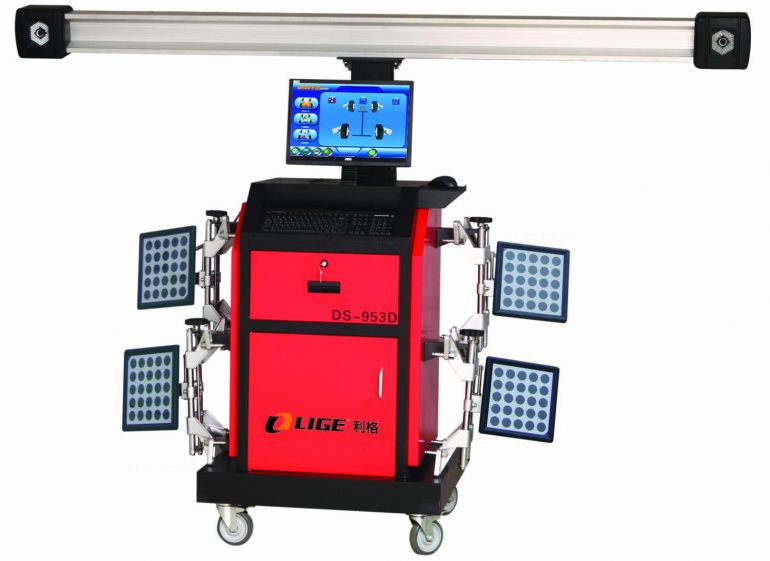The wheels on automobiles today do not point straight ahead. They are mounted, or “aligned”, at specific angles slightly offset from straight ahead. This is done to stabilize the steering and to reduce tire wear. Depending on the vehicle, this alignment involves Camber (inward or outward tilt of the wheels when looking head on), Caster (wheel tilt front or back looking from the side) and Toe-in/out (looking down at the wheels from above). The adjustments are measured in small fractions of an inch and require specialized alignment equipment for automotive technicians to adjust.
When the front end alignment of a car changes; there are two primary effects that you may recognize right away. First is that your car may not steer accurately. It may drift from side to side and the steering wheel may not seem centered. Perhaps it is the result of hitting a deep pothole or scoring a hard hit on a curb while parking. These and dozens of other small accidents can affect the alignment of the tires on your car and require a front end alignment.
The second symptom of poor front end alignment is unusual tire wear. Take a look at your front tires and see if the tires are worn more on one edge than another. If so, it specifically means that the camber is out of adjustment. A tire that wears down quickly may be because of too little too little or too much toe-in.
Note that vibrations in your wheels are different from alignment problems. Vibrations are probably caused by wheels being out of balance or bent (potholes can do that) or because suspension parts are worn. Although these many not be alignment oriented, they certainly are issues for your mechanic to look into.
Wheel alignment isn’t usually listed by vehicle manufacturers on the recommended maintenance schedule, so how often it should be done is a bit open-ended. If your vehicle tracks as straight as an arrow, you’re wheels likely are properly aligned. Even so, Holden Dodge recommends having your alignment checked annually, such as when you have your tires rotated. You certainly should have it done when you buy new tires so they don’t immediately start to wear unevenly. Many shops guarantee alignment work for up to one year, so you may want to bring your vehicle back before the guarantee ends to have the alignment checked again.
